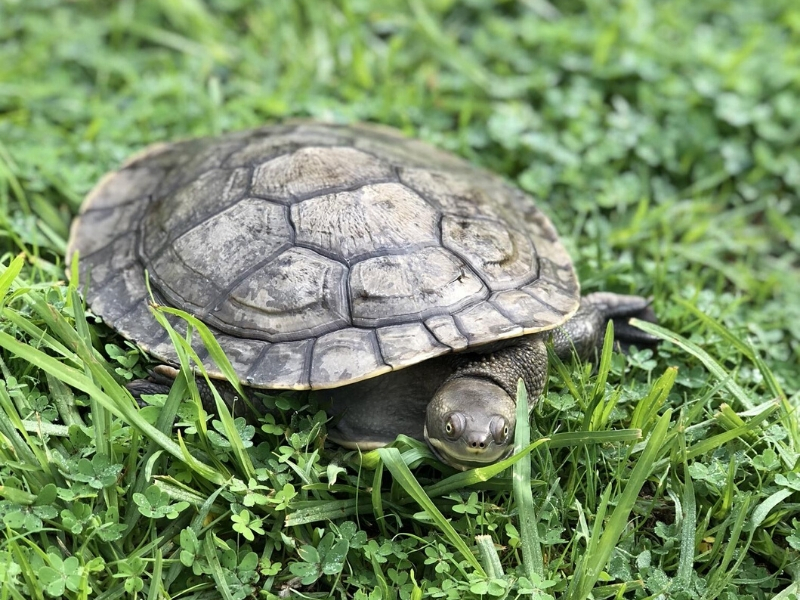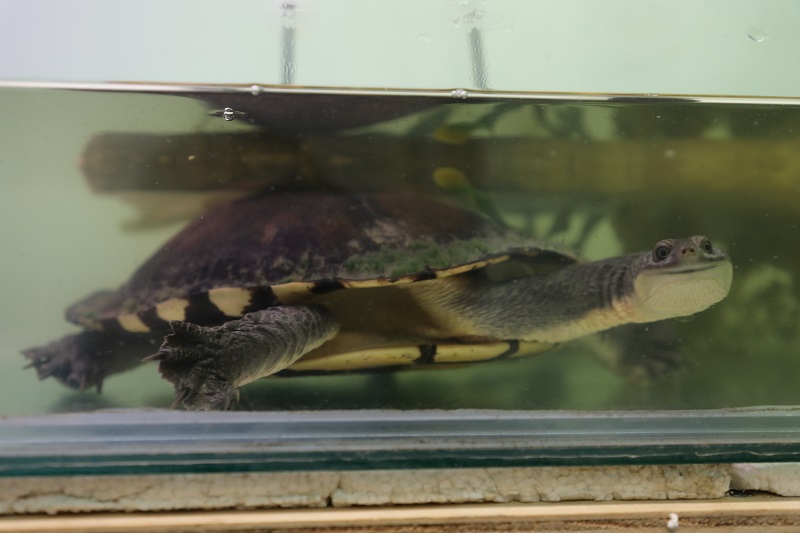Leah and Mikey, a pair of Murray short neck turtles, turned up at RSPCA’s Lonsdale shelter just last month. Not your typical pair of domestic pets, the two turtles were on the lookout for a special home with someone who understood their unique needs and behaviour.
Their arrival at our shelter followed the previous month’s intake of two Eastern long-necked turtles, who had endured unpleasant living conditions when seized by one of our inspectors. One of the turtles was missing both hind feet, while the other one was missing one hind foot.
While the cause of these injuries was unknown, it’s possible that another turtle had bitten the feet off – a shocking, but not uncommon incident when turtles are overcrowded.
Happily, both turtles made full recoveries and found a good home together. But, their condition upon arrival highlights the unfortunate lack of understanding when it comes to caring for pet turtles.
So what exactly do turtles need to live a happy life?

They may be unusual, but turtles are not low maintenance pets
As Murray short-necks, the 4-year-old pair of turtles are one of three turtle species found in the River Murray.
They don’t require a wildlife permit to keep, but RSPCA South Australia reptile expert Craig Dawe warns that turtles aren’t necessarily lower maintenance than common pets such as cats and dogs.
“It’s important that anyone interested in a pet turtle is prepared to put in the time to research their needs,” Craig says.
“We want turtles in our care to find a forever home, with owners understanding that Murray short-neck turtles can live for up to 30 years.”

A large area to swim, a fresh diet, and lots of light are all essentials for turtles
To live a comfortable and happy life, pet turtles require the following:
Quality housing
Turtles are active swimmers, so the bigger the better. A large aquarium or a large indoor or outdoor pond are options.
A balanced omnivorous diet
This should consist of specially formulated turtle feed which can be supplemented with fresh water plants, small freshwater fish such as whitebait and crabs, and vegetables including lettuce, carrots, capsicums and beans cut into bite-size pieces.
A warm, light-filled platform to bask on
It’s important that this is large enough for the turtle can completely climb out of the water.
Good water quality
According to Craig, failure to maintain water quality and provide opportunities for exposure to ultraviolet light are two common causes of ill-health in pet turtles.
“Like all reptiles, turtles need specific temperature zones to regulate their body temperature,” Craig tells us.
“You’ll need a submersible aquarium heater to maintain the optimum range of 20 to 25 degrees, and an aquarium thermometer to regularly check water temperature.”








